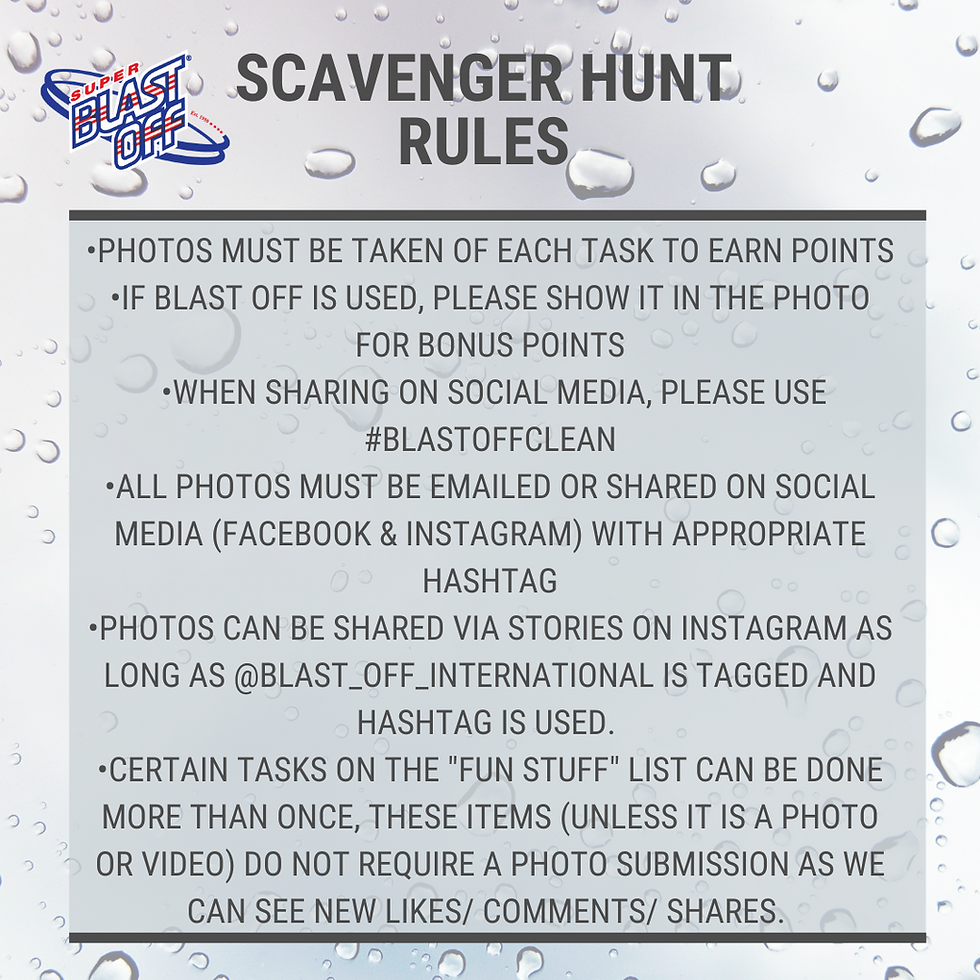Are your cleaning products a risk to your health?
- Blast Off Katie

- Jul 28, 2021
- 3 min read
Volatile Organic Compounds (VOCs) are found in practically every household cleaning item out there, but not all cleaning products are created equally and some could be putting your family at a higher risk!

Before we dive into the dangers of VOCs let's clarify what they are exactly! Organic compounds are everywhere, inside and outside of our homes. When they're released outdoors, it's typically from manufacturing facilities while indoors the culprits tend to be air fresheners, scented candles, and household cleaners. The EPA regulates outdoor air pollutants to help reduce smog in manufacturing areas, but they aren't regulating the air quality in your home.
VOCs are defined by scientists and the EPA as organic chemical compounds whose composition makes it possible for them to evaporate under normal indoor atmospheric conditions of temperature and pressure (1). So what does this mean? Well, to put it more simply, VOCs are chemicals that can vaporize into the air and infiltrate groundwater causing a variety of issues for your health and the environment (2). These health issues shouldn't be overlooked either, common household cleaning items can be linked to different respiratory ailments, eczema, endocrine and immune responses, as well as cancer (3). And even though the EPA is aware that VOCs are a health hazard, companies are not required to put VOC information on their labels, a lot of companies don't even put it in their technical data.
What products contain the highest VOC?
Air freshener sprays tend to release the most VOCs into your household environment (3), but other heavy hitters included sanitizing wipes, and aerosol disinfecting sprays (which also fall into the category of pesticides, but that's a different topic!). Even products like face wash, laundry detergent, and scented candles release VOCs into your indoor environment. Not all products are created equally, and even though VOC levels aren't listed on the label you can determine how bad it is for your environment simply by reading the label! Chemicals are obviously going to contain, well chemicals, but here are some to try to avoid in your cleaning products to reduce the VOCs in your home (3):
Formaldehyde - this one may seem like a no-brainer, but you'd be surprised to find it in more places than you think. Synthetic fragrances like air fresheners, laundry detergents or scent beads, body wash, or body sprays most likely contain formaldehyde!
Phthalates - you've probably seen this word on shampoo labels stating that it's "phthalate-free" and that's a good thing! Many cosmetic products, detergents, lotions, and hair care products contain phthalates and the FDA regulates the amount of this chemical compound in products (4).
Chloronates - like carbon tetrachloride which is often used as a propellant in aerosol cleaning chemicals as well as other disinfecting agents. Not only does it have high VOC content, it can also cause a variety of other health issues and has been found to contaminate groundwater when not disposed of properly (5).
Hydrocarbons - which covers a wide group of chemical compounds containing hydrogen and carbon (one you may have heard of is turpentine!). Found in furniture polishes, wood oil, specialty spot removers, and many industrial cleaning chemicals they not only have a high risk of increasing VOC levels, but also are the most common household product that poisons children under the age of 6 (6).
But rest assured that not all cleaning chemicals are a hazard to your health! Super Blast Off ranks as one of the safer chemicals you can use to clean your home. Super Blast Off's VOC level has been tested and comes in at 4.39% which is considered in the low range. Our products do not contain a synthesized scent helping reduce our VOC footprint. Why not clean with a product that is safe for your health and your home?

Source: SouthSeed
References
Environmental Protection Agency. (2021 February 9). Technical Overview of Volatile Organic Compounds. EPA.gov
United States Geological Survey. (no date). VOCs- Vapors in the Air, Dissolved in Groundwater. USGS.gov
Ethan, Safe Household Cleaning. (2018 January 16). VOCs in Household Cleaning Products. Safehouseholdcleaning.com
US Food and Drug Administration. (2013 December 5). Phthalates. FDA.gov
Environmental Protection Agency. (no date). Carbon Tetrachloride. EPA.gov
UConn Health. (2021 January). Hydrocarbons: The Deadly Poison Found in Everyone's Home. Health.Uconn.edu





Comments